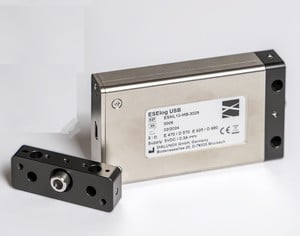A major advantage of the Confocal principle when compared with the Off-Axis principle used by lab-based systems is the flexibility with detector and sample positioning. The accurate positioning of the sample is highly critical when using the Off-Axis principle. With the Confocal principle positioning of the sample is not critical and comparable results can be easily obtained.
The DIALUNOX’s unique fluorescence detector is available as:
- Fluorescence Detector Kit
- Fluorescence Detector Component for OEM applications
DIALUNOX’s unique fluorescence detector was developed using an uncompromising approach to both optical performance and implementation, and can be used in a wide range of applications. The detector is available in single- or dual-channel formats (each having separate excitation and emission wavelengths). It uses confocal optics with small measurement windows for the assessment of liquids or solids. The detector is also packed into a solid casing that protects the device from dust and humidity and shields the sensor from electromagnetic radiation. Its lack of moving parts and low operating voltage (5V DC) make it suitable for use in hazardous environments without the need for extensive housing modifications. Whether analysis is required in a reaction vessel, in-line, in transfer, recycling, packaging or shipping, the ESE fluorescence detector can provide information to improve product quality and yield. This in turn helps decrease waste, and all without the need for complicated operational and calibration requirements.
Fluorescence is a special form of luminescence, an optical phenomenon in cold bodies, in which a molecule absorbs a high-energy photon, and reemits this light at a lower-energy or longer-wavelength. The term fluorescence is named after the mineral calcium fluoride, which has been seen to exhibit this phenomenon.
The energy difference between the absorbed and emitted photons is released as molecular vibrations (heat). Usually, the absorbed photon is in the ultraviolet part of the spectrum, and the emitted light (luminescence) is in the visible range, but this depends on the absorption curve and Stokes Shift of the particular fluorophore. The Stokes shift, so named after the Irish physicist George G. Stokes, is the difference (usually in frequency units) between the spectral positions of the band maxima (or the band origin) of the absorption and luminescence arising from the same electronic transition. Generally, the luminescence that occurs at longer wavelengths than the absorption is stronger than those at shorter wavelength. The latter may be called an anti-Stokes shift. Each fluorescent material has its own unique value, basically a fingerprint that allows the material to be clearly identified.












